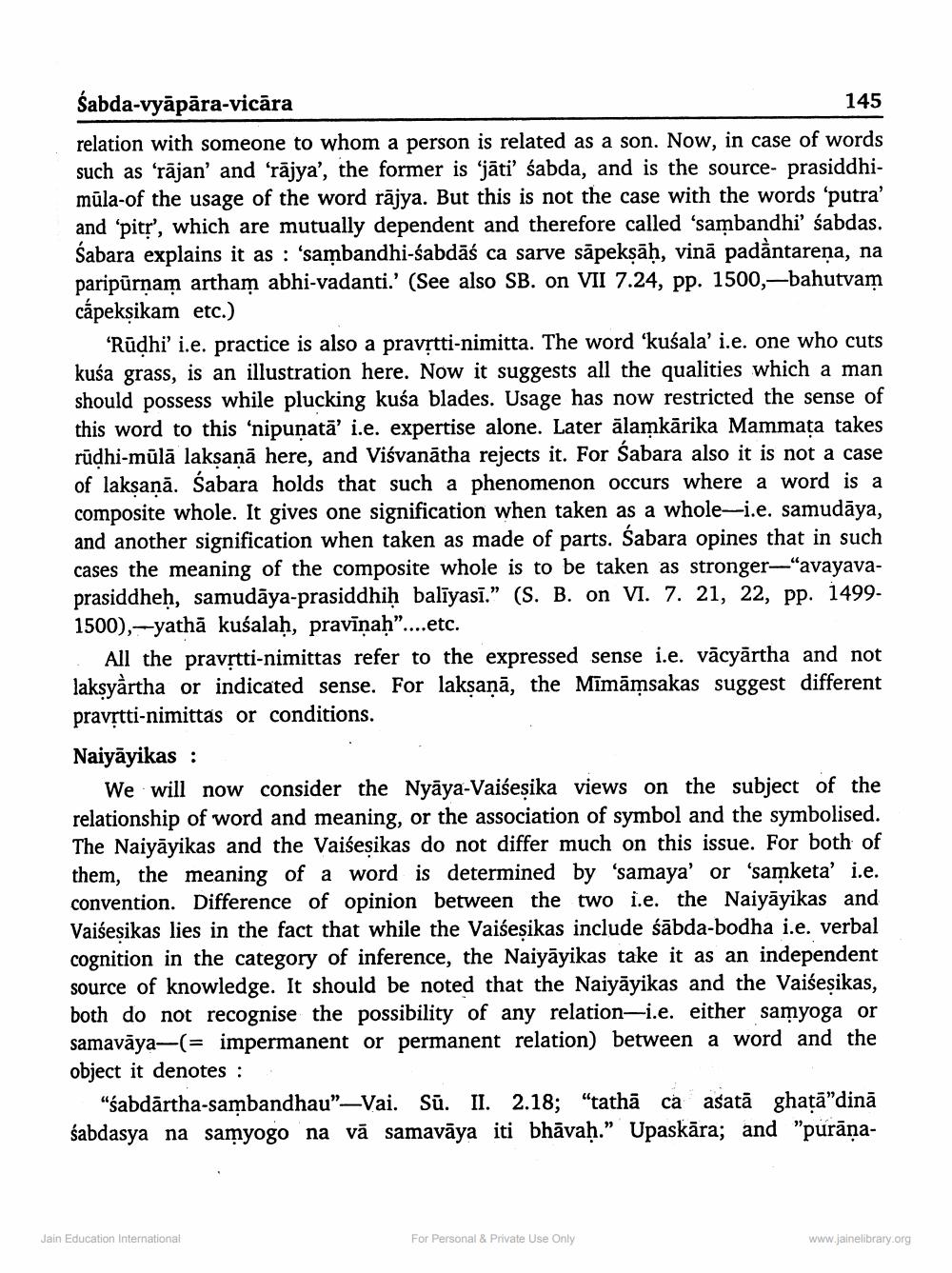________________
Śabda-vyāpāra-vicara
145
relation with someone to whom a person is related as a son. Now, in case of words such as frājan' and 'rājya', the former is “jāti' sabda, and is the source- prasiddhimūla-of the usage of the word rājya. But this is not the case with the words 'putra' and 'pitr', which are mutually dependent and therefore called 'sambandhi' śabdas. Sabara explains it as : 'sambandhi-sabdāś ca sarve sāpeksāh, vinā padàntarena, na paripūrņam artham abhi-vadanti.' (See also SB. on VII 7.24, pp. 1500,-bahutvam cấpeksikam etc.)
“Rūdhi' i.e. practice is also a pravịtti-nimitta. The word 'kuśala' i.e. one who cuts kusa grass, is an illustration here. Now it suggests all the qualities which a man should possess while plucking kusa blades. Usage has now restricted the sense of this word to this ‘nipunatā' i.e. expertise alone. Later ālamkārika Mammata takes rūdhi-mūlā laksanā here, and Viśvanātha rejects it. For Sabara also it is not a case of laksanā. Sabara holds that such a phenomenon occurs where a word is a composite whole. It gives one signification when taken as a whole-i.e. samudāya, and another signification when taken as made of parts. Sabara opines that in such cases the meaning of the composite whole is to be taken as stronger—"avayavaprasiddheh, samudāya-prasiddhih balīyasī." (S. B. on VI. 7. 21, 22, pp. 14991500), ---yathā kuśalaḥ, pravīņaḥ"....etc.
All the pravrtti-nimittas refer to the expressed sense i.e. vācyārtha and not laksyàrtha or indicated sense. For laksanā, the Mīmāmsakas suggest different pravrtti-nimittas or conditions.
Naiyāyikas :
We will now consider the Nyāya-Vaiseșika views on the subject of the relationship of word and meaning, or the association of symbol and the symbolised. The Naiyāyikas and the Vaiseșikas do not differ much on this issue. For both of them, the meaning of a word is determined by 'samaya' or 'samketa' i.e. convention. Difference of opinion between the two i.e. the Naiyāyikas and Vaisesikas lies in the fact that while the Vaisesikas include sābda-bodha i.e. verbal cognition in the category of inference, the Naiyāyikas take it as an independent source of knowledge. It should be noted that the Naiyāyikas and the Vaiseșikas, both do not recognise the possibility of any relation-i.e. either samyoga or samavāya—(= impermanent or permanent relation) between a word and the object it denotes :
"sabdārtha-sambandhau”—Vai. Sū. II. 2.18; "tathā ca asatā ghatā”dinā śabdasya na samyogo na vā samavāya iti bhāvaḥ." Upaskāra; and "purāņa
Jain Education International
For Personal & Private Use Only
www.jainelibrary.org




